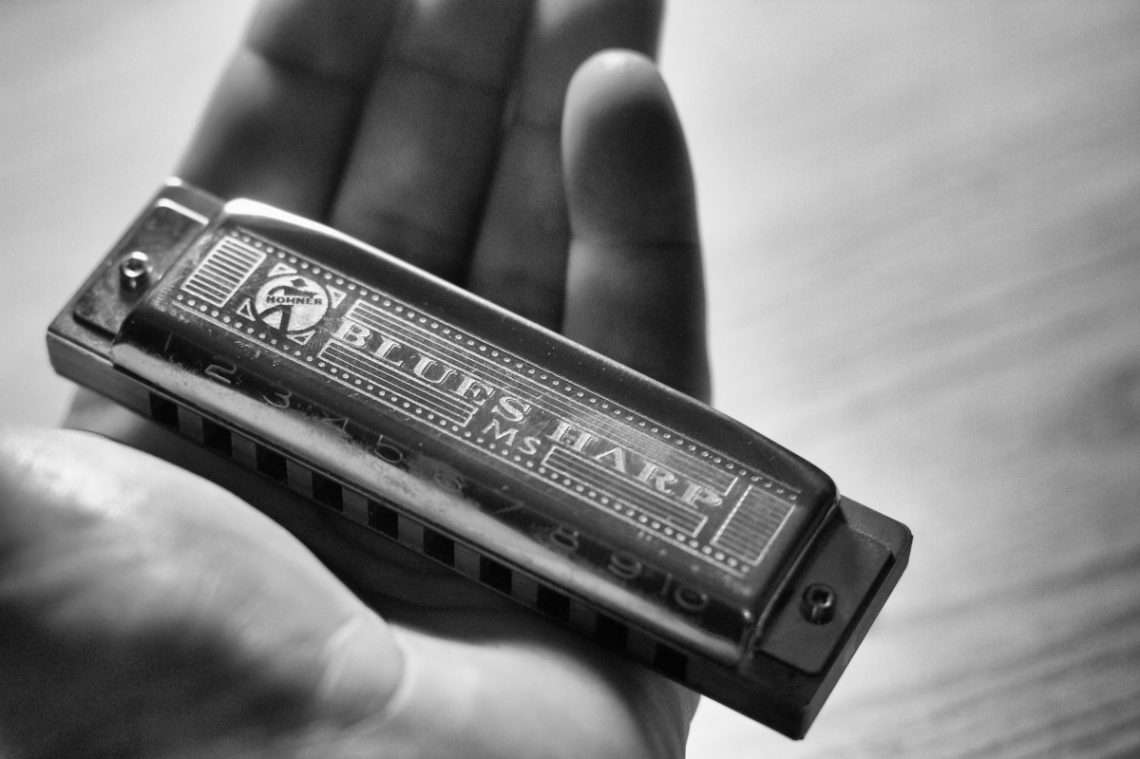
How to learn to play the Harmonica
Contents
“The harmonica belongs to the family of reed wind instruments. In addition to the complex theory, this primarily means that in order to extract sound, the air into the harmonica must be exhaled. Pay attention to what exactly to exhale, and not to blow out “
The desire to learn how to play a musical instrument can make beginners fear of failure, while the more daring ones immediately start looking for a tutor. There are also those who would like to learn how to play the harmonica from a tutorial – in this case, the Internet or book tutorials come to the rescue.
A novice musician is faced with a lot of different tips, which are not always easy to understand. Where to start to learn how to play the harmonica, we tell in our article.
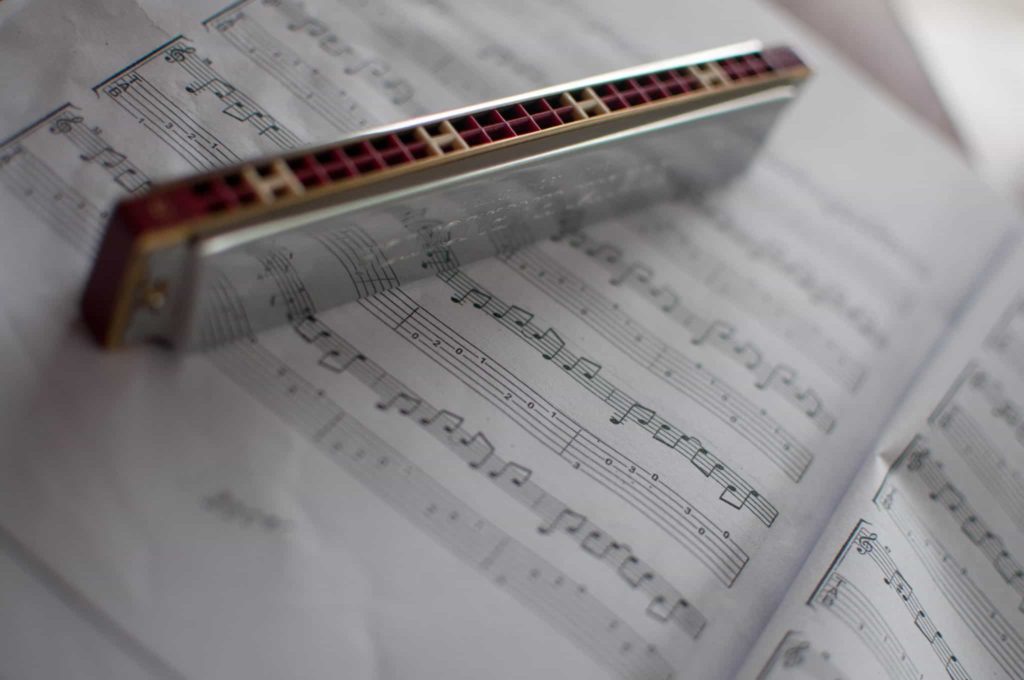
Tool selection
To start practicing, first of all, you will need to choose a harmonica, or harmonica, as this instrument is correctly called. There are two varieties of harmonica: diatonic, with a narrower sound range, and chromatic, a full-sounding harmonica that can be played in any key.
If you don’t plan to play compositions in a blues color, then it is better to start with a diatonic harmonica with ten holes. In addition, the price of such a tool is not too high. From the performers you can listen to Little Walter and Sonny Boy Williamson. Diatonic harmonicas are often customizable and played with blows – a technique similar to bending, only in reverse. Read about the techniques of playing the harmonica in the article below. It plays complex music, jazz, fusion, etc. Customized harmonicas are much higher in price.
Also in the blues, chromatic harmonicas are used. Usually harpers play in several positions with a similar feel to the instrument, as in 3rd position on the diatonic the sound is tighter. If you prefer playing more complex music, a different temperament, then give preference to chromatic harmonica . You’ll love the music of Stevie Wonder and Toots Tielemans .
Chromatics is used in the same way as on piano keys. When playing a chromatic harmonica, you won’t be able to use techniques suitable for a diatonic harmonica. If we talk about the cost, then its acquisition will cost you more.
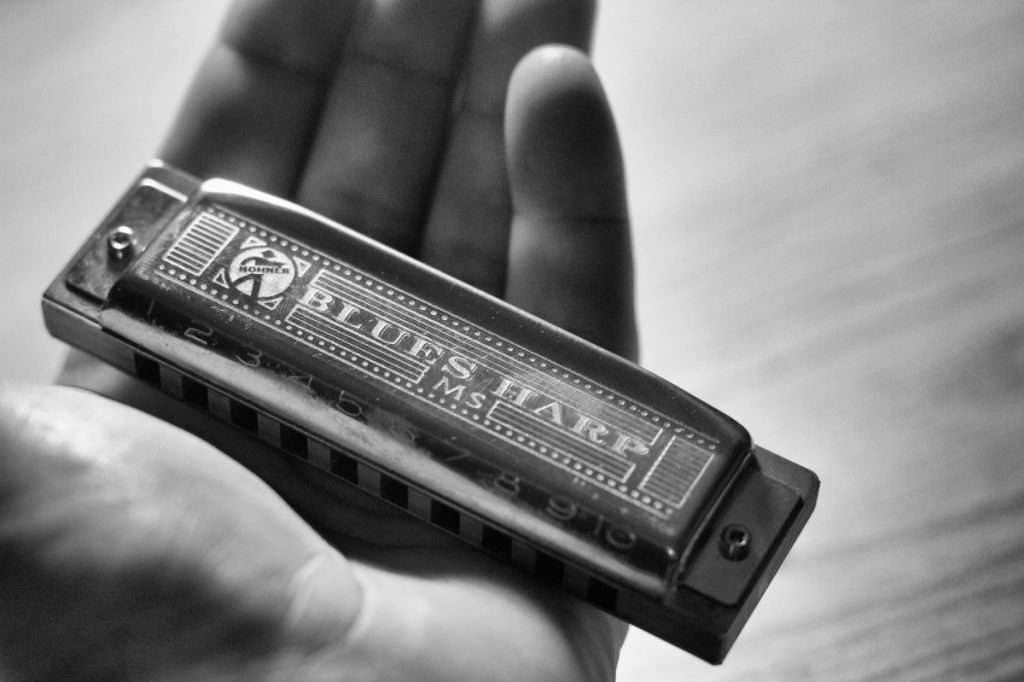
Extracting sound
The harmonica belongs to the family of reed wind instruments. In addition to the complex theory, this primarily means that in order to extract sound, the air into the harmonica must be exhaled. Pay attention to what exactly to exhale, and not to blow out. The stronger the flow of exhaled air, the louder the sound. However, despite the strength of the air flow, you should try to exhale relaxed. Another feature of the instrument is that the sound can be extracted not only on exhalation, but also on inhalation.
Correct harmonica position
The sound of the instrument largely depends on the correct setting of the hands. Hold the harmonica with your left hand, and direct the flow of sound with your right. It is the cavity formed by the palms that creates the chamber for resonance. By tightly closing and opening the brushes, you can achieve different effects.
In order to ensure a strong and even flow of air, the head must be kept level, and the face, throat, tongue and cheeks must be completely relaxed. The harmonica should be tightly and deeply clasped with the lips, and not just pressed against the mouth. In this case, only the mucous part of the lips is in contact with the instrument.
Single notes on the exhale
The first thing to start learning is the performance of individual notes. Different methods follow different explanations, but the simplest is to try whistling or blowing out a candle. To do this, we fold our lips with a tube and exhale the air. After this method is tested without an instrument, you can practice with an accordion.
Try to hit one hole each time, and not several at once. At first, you can help yourself with your fingers. The task at this stage is to learn how to play individual sounds in sequence.
An important nuance: bring the harmonica to your lips and move it with your hands, while the head remains motionless. Hands and lips should not be pinched, this creates additional difficulties for the game.
Notes on the breath
The next step is to learn how to make sounds while inhaling. The position of the lips is similar to the same as on exhalation, only the direction of the air flow changes – now you do not need to blow out the candle, but draw the air into yourself.
When mastering this method, you will notice that the sound from the same hole on inhalation and exhalation is different. You only need to follow the purity of the performance of each particular sound.
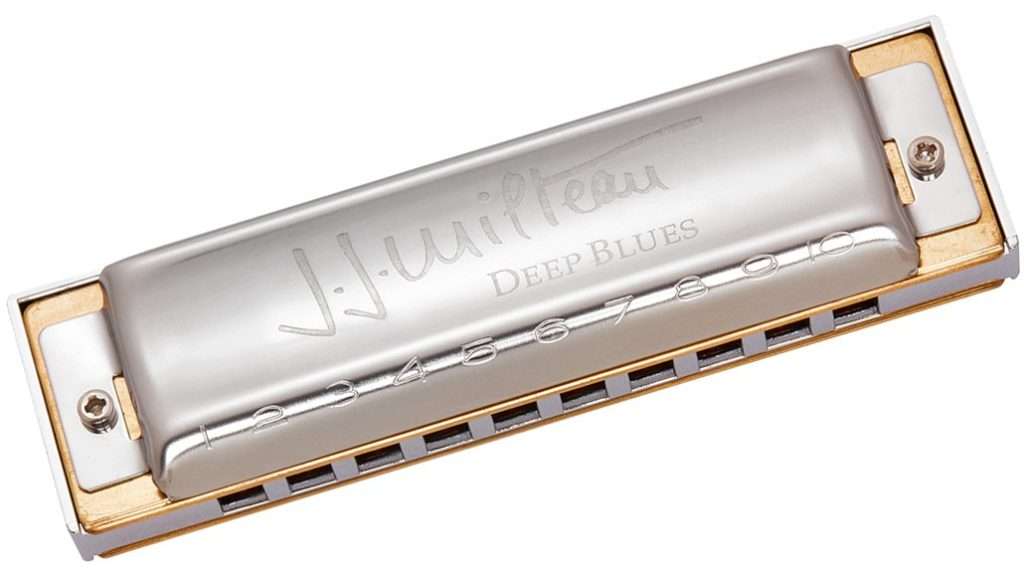
Introduction to tablature
To avoid difficulties in mastering musical notation, when learning to play the harmonica, just like the guitar, tablature is used – that is, notation in the form of numbers and conventional signs. With these tablature you can learn any melody you are interested in.
How to read tablature correctly
Numbers indicate hole numbers. They are counted in ascending order, starting from the left edge of the harmonic. The arrows represent breathing. Since there are two notes (adjacent) per hole, the up arrow indicates exhalation, the down arrow indicates inhalation.
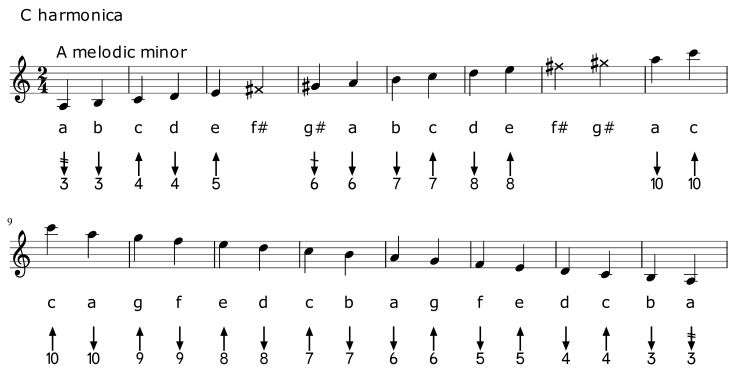
Chords and playing techniques
Chords are several notes sounding at the same time. On the harmonica, chords are taken by inhaling or exhaling not into one hole, but into several at once. At the same time, it should be borne in mind that playing only with chords is practically not used.
A trill is the rapid alternation of two wind holes. Initially, the trill appeared as an imitation of bird singing. To perform a trill on the harmonica, you need to vigorously move the instrument between the lips to the right and left. With this technique, you can move your head, as long as there is a clear alternation of two sounds with the same time interval.
Glissando is a sliding from note to note, often at great distances from each other. This technique is regularly used in jazz music. Glissando sounds spectacular and is performed quite simply: you need to select the note with which you plan to start and then move the instrument to the right or left with a sharp movement.
Tremolo is another technique similar in sound to a trill, only this time the game is played not with different sounds, but with volume. The harmonica is held in the left hand by the “back” part of the instrument. The right hand at this time closes the instrument as much as possible from above, the palms of the hands should be pressed against each other. When the palm of the right hand is deflected back, the sound changes.
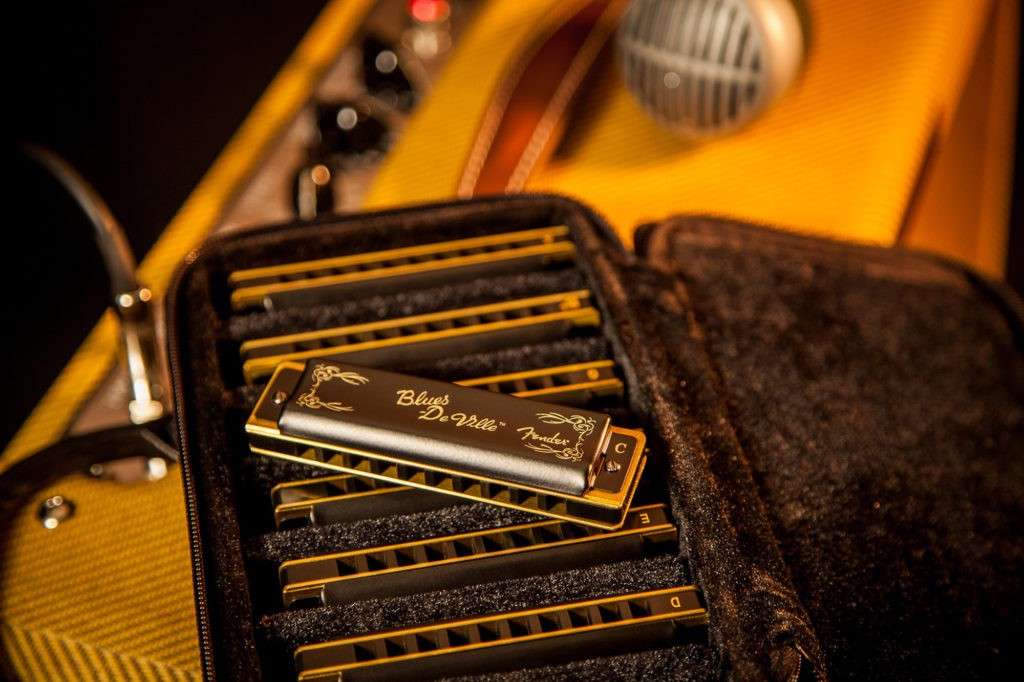
A bend is a technique by which you can raise or lower a note. Reception is difficult, if it does not work right away – do not be upset. To study the bend, you need to experiment with the angle of the air jet entering the tool hole. A normal note is played on the condition that the flow is directed straight ahead. The bend is the air going diagonally.
Tongue blocking is the most difficult technique in picking, so it’s best to start when you can learn to play the harmonica very well. This method of play helps you quickly and accurately move between the holes and is guaranteed to hit them without touching the neighboring ones. The essence of the tongue blocking technique is to close two left holes with the tongue (if you take a chord, then three). The result is a gurgle-like sound, like an overtone. It is still important to maintain the purity of each single sound.
And we wish success to everyone who decides to learn how to play the harmonica. Despite the ease of development, you still need to spend some time at the very beginning of the path, and later on you can easily master this small wind instrument with a beautiful sound.
Final Recommendations
You can understand how to play the harmonica without knowing musical notation at all . However, by spending time on learning, the musician will have the opportunity to read and study a large number of melodies, as well as record their own developments.
Don’t be intimidated by the letter designations of musical sounds – they are easy to understand (A is la, B is si, C is do, D is re, E is mi, F is fa, and finally G is salt)
If learning takes place on your own, a voice recorder, a metronome and a mirror can come in handy in your work – for constant control over yourself. Accompanying ready-made musical recordings will help prepare for live musical accompaniment.


You May Also Like
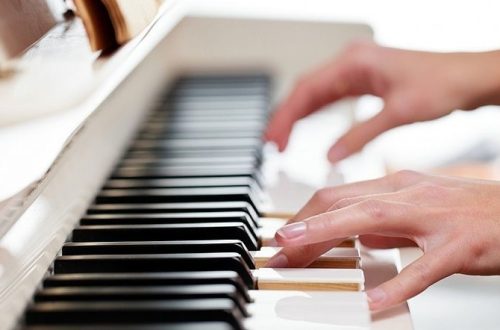
How to learn to play the synthesizer
22.09.2022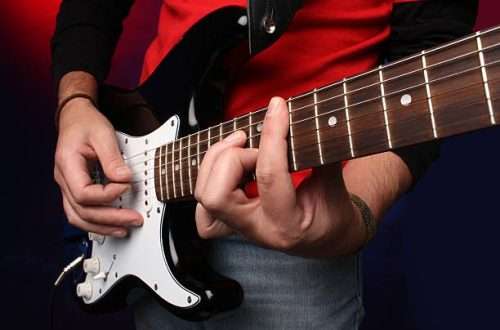
How to learn to play Electric Guitar
22.09.2022


